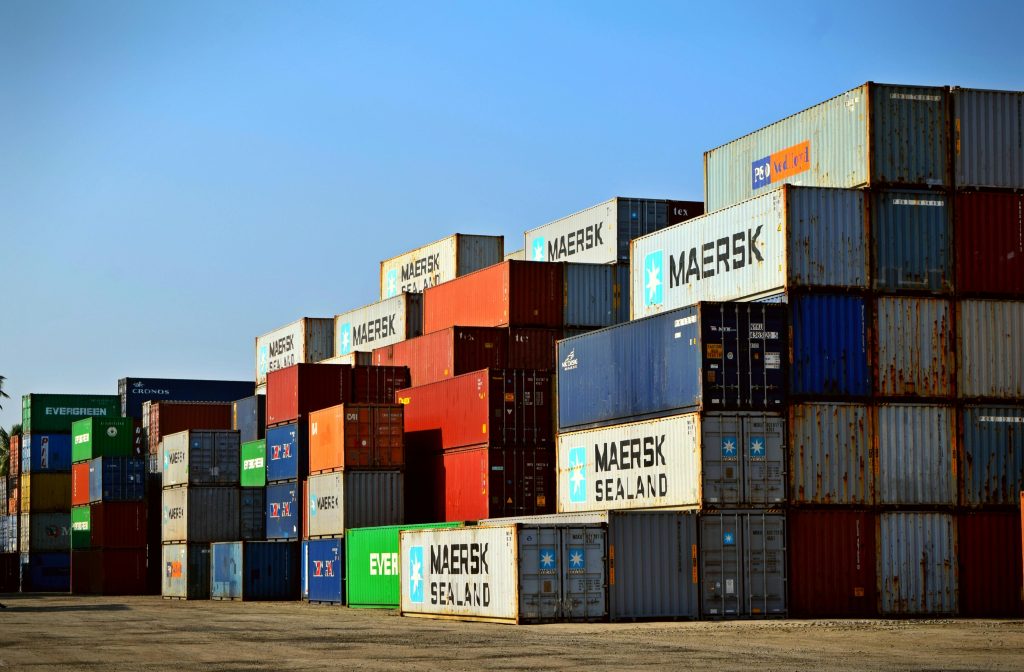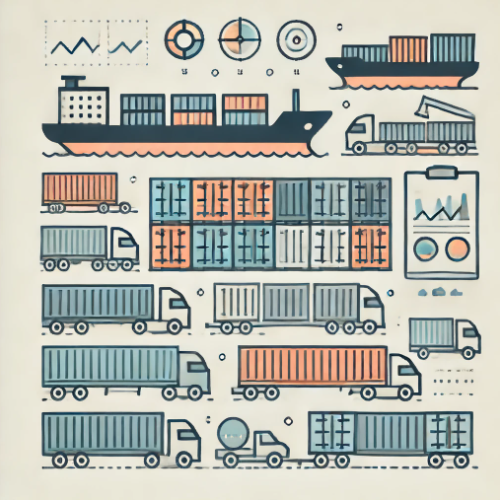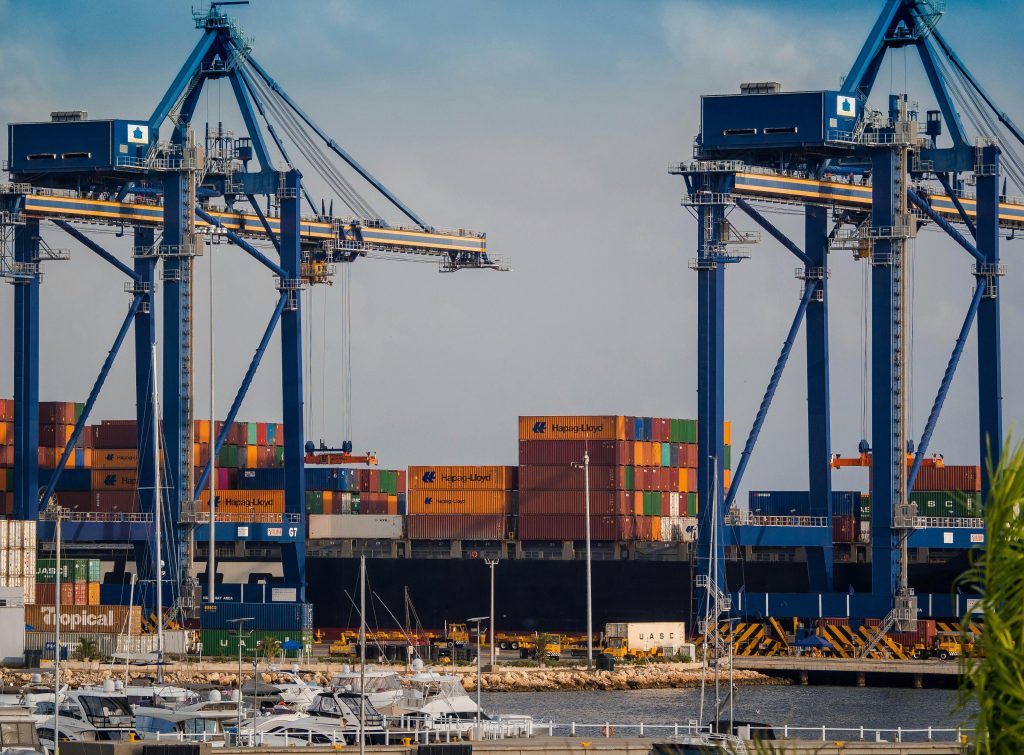Comprehensive Guide to Shipping Container Sizes

Shipping Container Dimensions Calculator
Introduction
There are different shipping container sizes to facilitate easy loading, unloading, and transfer between different modes of transport, including ships, trucks, and trains.
This guide provides detailed information on the various sizes of shipping containers, their specifications, typical use cases, and considerations for their use.

List of Shipping Container Sizes
- 10-Foot Shipping Containers
- 20-Foot Shipping Containers
- 20-Foot High Cube Containers
- 40-Foot Shipping Containers
- 40-Foot High Cube Containers
- Specialized Containers:
- Refrigerated Containers (Reefers)
- Open-Top Containers
- Flat Rack Containers
- Tank Containers
10-Foot Containers size Specification
Overview: 10-foot containers are the smallest standard shipping container sizes, often used for smaller loads or storage solutions in limited spaces.
Specifications:
- Exterior Dimensions: 10′ x 8′ x 8’6″
- Interior Dimensions: 9’3″ x 7’8″ x 7’10”
- Max Gross Weight: 24,000 kg (52,910 lbs)
- Tare Weight: 1,300 kg (2,870 lbs)
- Capacity to Load Line: 22,700 kg (50,040 lbs)
- Volume (Internal): 16 cubic meters (565 cubic feet)
Use Cases:
- Small loads
- On-site storage
- Limited space applications
Considerations for Use:
- Durability: Built to withstand harsh environments.
- Accessibility: Easy to transport and maneuver.
- Flexibility: Can be customized for various storage needs.
Ocean Freight Rate:
- Generally lower due to smaller size but less common, so availability might affect cost.
Why Use a 10-Foot Container?:
- Ideal for small shipments and storage in confined spaces where larger containers would be impractical.
20-Foot Shipping Containers
Overview: The 20-foot container is a widely used standard container size, offering a balance between capacity and maneuverability.
Specifications:
- Exterior Dimensions: 20′ x 8′ x 8’6″
- Interior Dimensions: 19’4″ x 7’9″ x 7’10”
- Max Gross Weight: 30,480 kg (67,200 lbs)
- Tare Weight: 2,170 kg (4,780 lbs)
- Capacity to Load Line: 28,310 kg (62,420 lbs)
- Volume (Internal): 33 cubic meters (1,169 cubic feet)
Use Cases:
- Heavy cargo
- Construction materials
- Machinery
Considerations for Use:
- Versatility: Suitable for a wide variety of goods.
- Security: Robust locking mechanisms.
- Cost-Effective: Economical for transporting heavy loads.
Ocean Freight Rate:
- Generally cost-effective, widely available and used, making it a popular choice for many shippers.
Why Use a 20-Foot Container?:
- Ideal for transporting heavy and dense cargo, providing a good balance between size and ease of handling.
20-Foot High Cube Containers
Overview: 20-foot high cube containers offer extra height, providing additional volume for cargo that requires more vertical space.
Specifications:
- Exterior Dimensions: 20′ x 8′ x 9’6″
- Interior Dimensions: 19’4″ x 7’9″ x 8’10”
- Max Gross Weight: 30,480 kg (67,200 lbs)
- Tare Weight: 2,300 kg (5,070 lbs)
- Capacity to Load Line: 28,180 kg (62,130 lbs)
- Volume (Internal): 37 cubic meters (1,305 cubic feet)
Use Cases:
- Bulky items requiring extra height
- Voluminous cargo
- Household goods
Considerations for Use:
- Increased Capacity: Extra foot of height for more cargo space.
- Optimal for Storage: Suitable for storing tall items.
- Improved Air Circulation: Beneficial for certain types of goods.
Ocean Freight Rate:
- Slightly higher than standard 20-foot containers due to the increased volume.
Why Use a 20-Foot High Cube Container?:
- Provides additional vertical space, making it ideal for bulky and tall items.
40-Foot Shipping Containers
Overview: The 40-foot container is the most commonly used container, providing a large volume for transporting goods.
Specifications:
- Exterior Dimensions: 40′ x 8′ x 8’6″
- Interior Dimensions: 39’5″ x 7’9″ x 7’10”
- Max Gross Weight: 32,500 kg (71,650 lbs)
- Tare Weight: 3,800 kg (8,380 lbs)
- Capacity to Load Line: 28,700 kg (63,270 lbs)
- Volume (Internal): 67 cubic meters (2,389 cubic feet)
Use Cases:
- Large volume goods
- Furniture
- Industrial equipment
Considerations for Use:
- High Volume Transport: Ideal for shipping large quantities of goods.
- Cost Efficiency: More economical for transporting bulk items.
- Global Standard: Widely accepted in international shipping.
Ocean Freight Rate:
- Competitive rates due to widespread use and availability.
Why Use a 40-Foot Container?:
- Suitable for transporting large volumes of goods, making it a versatile and cost-effective option.
40-Foot High Cube Containers
Overview: 40-foot high cube containers offer extra height, making them ideal for transporting lightweight but bulky cargo.
Specifications:
- Exterior Dimensions: 40′ x 8′ x 9’6″
- Interior Dimensions: 39’5″ x 7’9″ x 8’10”
- Max Gross Weight: 32,500 kg (71,650 lbs)
- Tare Weight: 4,150 kg (9,150 lbs)
- Capacity to Load Line: 28,350 kg (62,500 lbs)
- Volume (Internal): 76 cubic meters (2,694 cubic feet)
Use Cases:
- Lightweight but bulky cargo
- Apparel
- Electronics
Considerations for Use:
- Enhanced Storage: Provides additional vertical space.
- Versatility: Suitable for a wide range of products.
- Efficient Loading: Easier to load and unload bulky items.
Ocean Freight Rate:
- Slightly higher due to the additional volume but still cost-effective for certain types of cargo.
Why Use a 40-Foot High Cube Container?:
- Ideal for transporting voluminous goods that are not particularly heavy.

Specialized Containers
Refrigerated Containers (Reefers)
Overview: Refrigerated containers, or reefers, are used for transporting perishable goods that require temperature control.
Specifications:
- Sizes: 20-foot and 40-foot
- Max Gross Weight: 30,480 kg (67,200 lbs) for 20-foot; 32,500 kg (71,650 lbs) for 40-foot
- Temperature Control: Can maintain a specific temperature range
Use Cases:
- Perishable goods (food, pharmaceuticals)
- Temperature-sensitive items
Considerations for Use:
- Temperature Control: Essential for maintaining product quality.
- Flexible Use: Can be used in various temperature settings.
- Energy Efficient: Advanced technology ensures minimal energy consumption.
Ocean Freight Rate:
- Higher due to the specialized nature and refrigeration requirements.
Why Use a Reefer?:
- Essential for transporting perishable items that require constant temperature control.
Open-Top Containers
Overview: Open-top containers are used for cargo that cannot be easily loaded through standard doors, such as heavy machinery and bulk materials.
Specifications:
- Sizes: 20-foot and 40-foot
- Max Gross Weight: 30,480 kg (67,200 lbs) for 20-foot; 32,500 kg (71,650 lbs) for 40-foot
Use Cases:
- Heavy machinery
- Bulk materials
Considerations for Use:
- Easy Loading: Top-loading makes it easy to load heavy and bulky items.
- Customizable Covers: Equipped with removable tarpaulin covers.
- Durability: Designed to handle heavy-duty cargo.
Ocean Freight Rate:
- Generally higher due to the specialized design and use case.
Why Use an Open-Top Container?:
- Ideal for oversized cargo that cannot fit through standard container doors.
Flat Rack Containers
Overview: Flat rack containers are used for oversized cargo that does not fit in standard containers, such as vehicles and large industrial parts.
Specifications:
- Sizes: 20-foot and 40-foot
- Max Gross Weight: 30,480 kg (67,200 lbs) for 20-foot; 32,500 kg (71,650 lbs) for 40-foot
- Tare Weight: Varies, typically around 2,500 kg (5,510 lbs) for 20-foot; 5,000 kg (11,020 lbs) for 40-foot
- Capacity to Load Line: 28,000 kg (61,730 lbs) for 20-foot; 27,500 kg (60,630 lbs) for 40-foot
- Volume (Internal): Not applicable due to open design
Use Cases:
- Heavy equipment
- Vehicles
- Large machinery
Considerations for Use:
- Versatility: Sides can be folded to accommodate oversized loads.
- Sturdy Construction: Built to handle heavy loads.
- Flexibility: Ideal for awkwardly shaped items.
Ocean Freight Rate:
- Typically higher due to the specialized design and heavy-duty use.
Why Use a Flat Rack Container?:
- Perfect for transporting oversized and heavy cargo that cannot fit into standard containers.
Tank Containers
Overview: Tank containers are designed for transporting liquids and gases, including chemicals, fuels, and food-grade liquids.
Specifications:
- Sizes: 20-foot
- Max Gross Weight: 36,000 kg (79,370 lbs)
- Tare Weight: 3,750 kg (8,270 lbs)
- Capacity: 24,000 liters (6,340 gallons)
- Volume (Internal): 24 cubic meters (847 cubic feet)
Use Cases:
- Transporting liquids and gases
- Chemicals
- Food-grade liquids
Considerations for Use:
- Safety Standards: Built to meet stringent safety regulations.
- Insulated and Non-Insulated: Available in both types.
- Corrosion Resistant: Made from materials that resist corrosion for long-lasting use.
Ocean Freight Rate:
- Higher due to the specialized nature and safety requirements.
Why Use a Tank Container?:
- Essential for safely transporting liquids and gases, ensuring compliance with safety standards.

Additional Considerations for Shipping Containers
Shipping containers are designed to be robust and durable, withstanding harsh weather conditions and rough handling during transport. Most containers are made of steel or aluminum, providing strength and longevity.
Standard shipping containers come with secure locking mechanisms to prevent unauthorized access and ensure the safety of the cargo. High-security containers might include advanced locking systems for additional protection.
Shipping containers are versatile and can be customized for various applications, including temporary housing, pop-up shops, and mobile offices. Their modular nature allows for easy modification and repurposing.
Using shipping containers for repurposing and storage can be an eco-friendly option, reducing the need for new construction materials and promoting recycling.
Regular maintenance, such as rust treatment and structural inspections, ensures the longevity and integrity of shipping containers, making them a reliable investment for long-term use.
Linbis Enhances Your Shipping Container Management
Linbis logistics software offers a robust solution for managing shipping containers, addressing the key challenges faced by freight forwarders, importers, and exporters. By improving efficiency, accuracy, and customer satisfaction, Linbis helps businesses optimize their operations and achieve better outcomes in their logistics processes.
For more information on how Linbis freight forwarder software can transform your shipping container management, visit Linbis Logistics Software.
